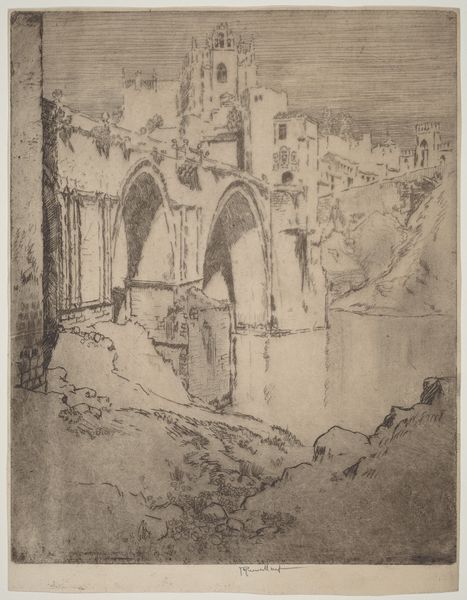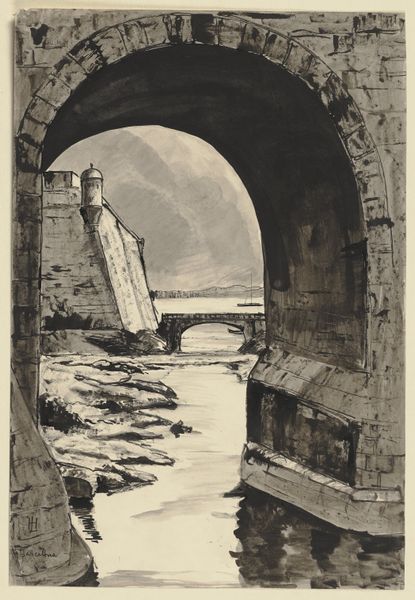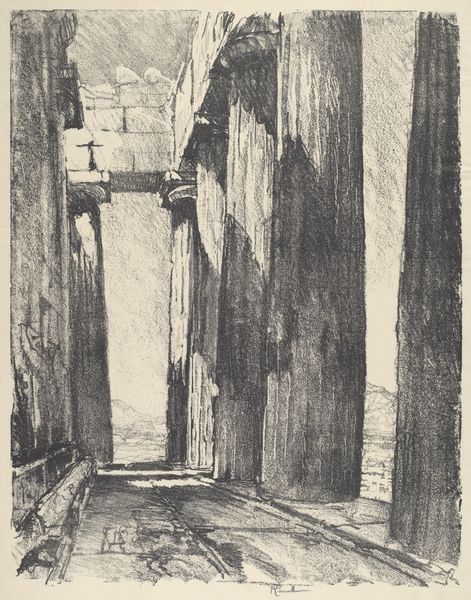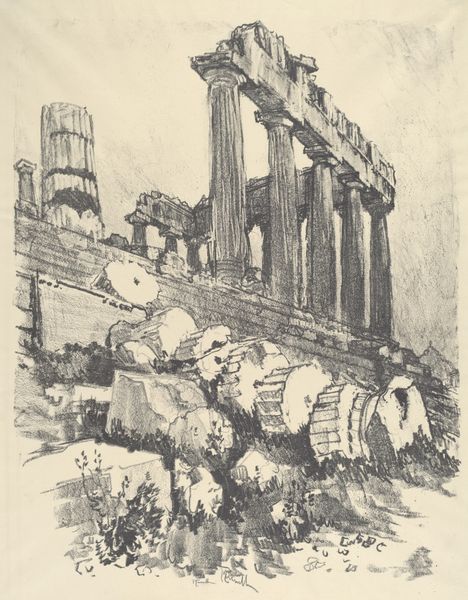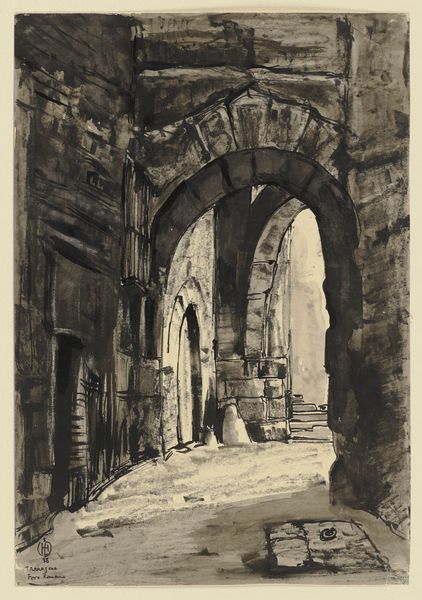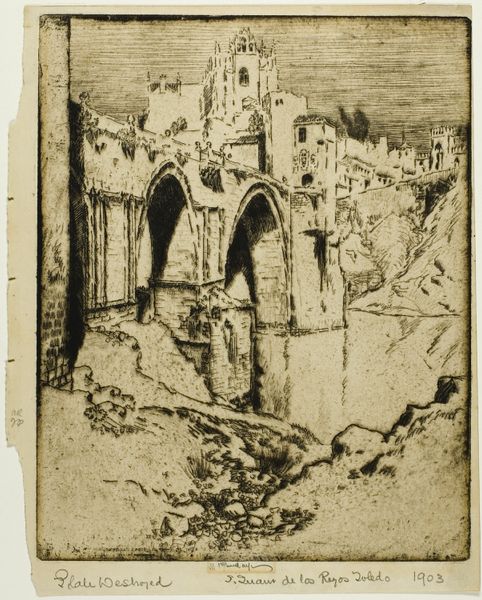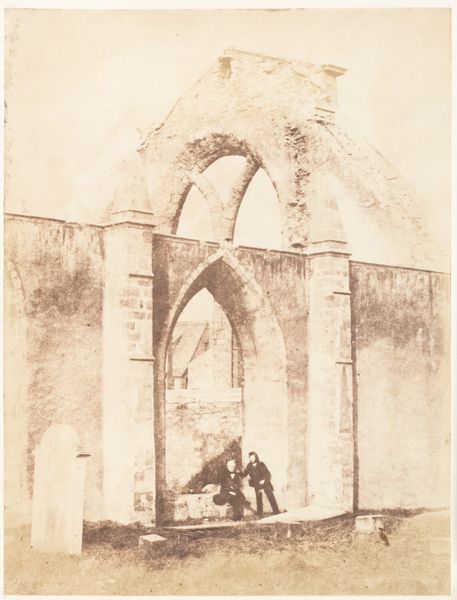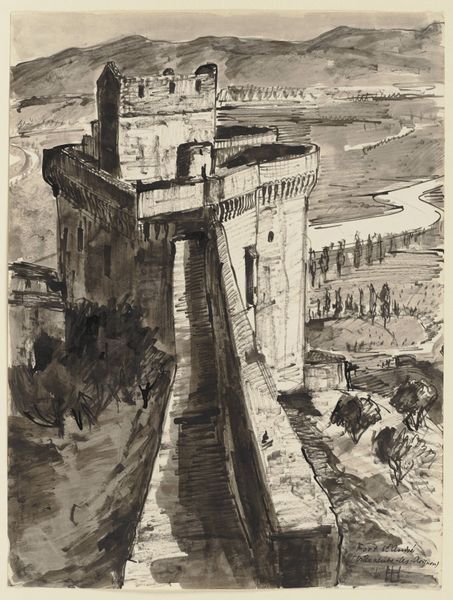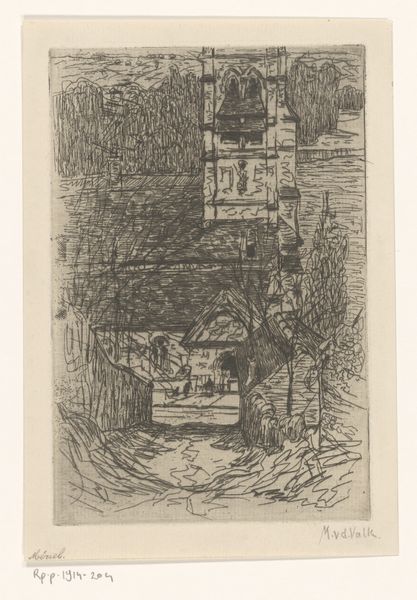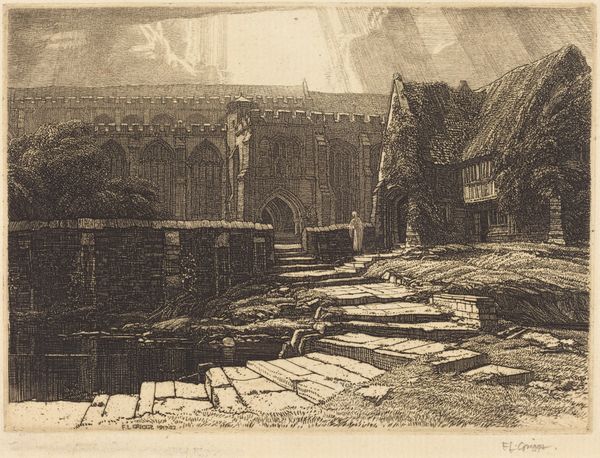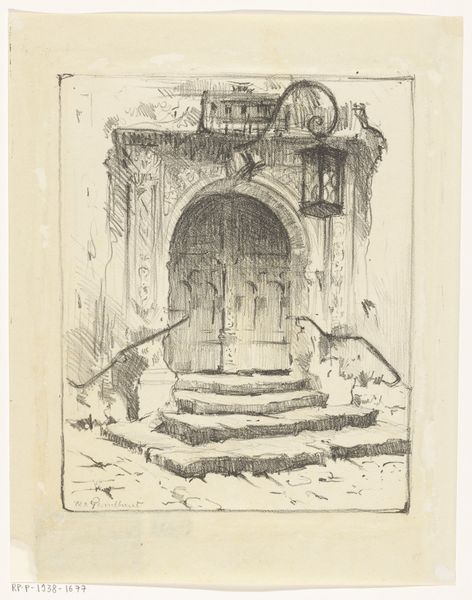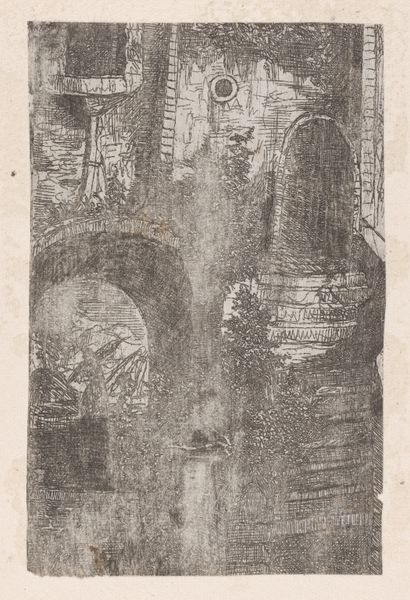
drawing, paper, charcoal, architecture
#
drawing
#
landscape
#
paper
#
form
#
geometric
#
charcoal
#
architecture
#
realism
Copyright: Public Domain
Curator: Immediately, I’m struck by the sheer mass and brooding presence of the ruined archway. It's heavy, monumental, but fragmented, like a memory. Editor: Indeed. This is Hermann Lismann's charcoal drawing, titled "Der Pont del Diable in Martorell," and what’s fascinating to me is the choice of this particular landmark. The "Devil's Bridge" – just that name alone sets the stage for so much socio-political meaning. Curator: Oh, absolutely! The name resonates deeply with potent folklore. Bridges themselves often symbolize transitions, connections between worlds, and overcoming obstacles. But linking this specific bridge to the devil… what dark narratives, historical tensions, and perhaps even anxieties about progress are lurking beneath the surface here? Editor: Precisely. Bridges historically represented not just physical but ideological crossings, and the devil's association could signal resistance to change or perhaps the perilous temptations accompanying progress. Note how Lismann renders the stone itself. See the rough texture, the dramatic contrasts of light and shadow, and how he focuses on the degradation. The bridge is worn, scarred, no longer whole. It speaks of histories layered upon histories. Curator: The visual weight feels purposeful. It pushes back against the Romantic impulse to glorify ruins. Instead, this image conveys something more ambiguous. And what about that stark palette, the exclusive use of charcoals to compose tones ranging from darkest blacks to subtly blurred greys… how does that shape the emotional impact? Editor: In essence, these tonal values conjure the weight of time. Consider the symbol of the arch. Despite being damaged, even incomplete, that arch remains. An enduring motif, wouldn’t you agree? And Lismann's dramatic lighting calls the eye directly toward it. Curator: I do. While we could speculate on whether he sought to critique particular power structures by focusing on such an infamous and broken structure, what stands out to me is its continued ability to act as a meeting point between human engineering and natural forces. Editor: A convergence materialized here in marks of charcoal on paper, each line an invitation to examine not just a bridge but a testament to cultural memory. Curator: Well said. Thank you for guiding us in this fascinating way. Editor: The pleasure was mine. This image truly bridges historical realities with powerful symbolic depth.
Comments
No comments
Be the first to comment and join the conversation on the ultimate creative platform.
